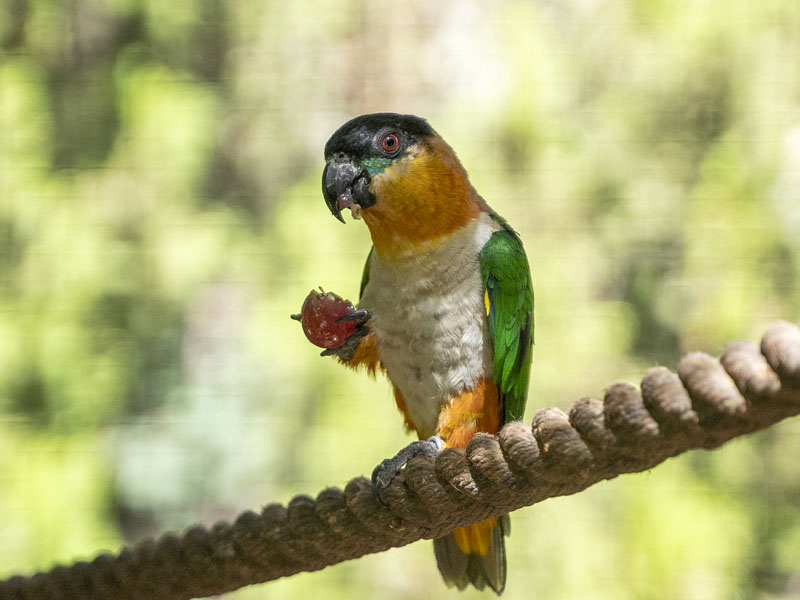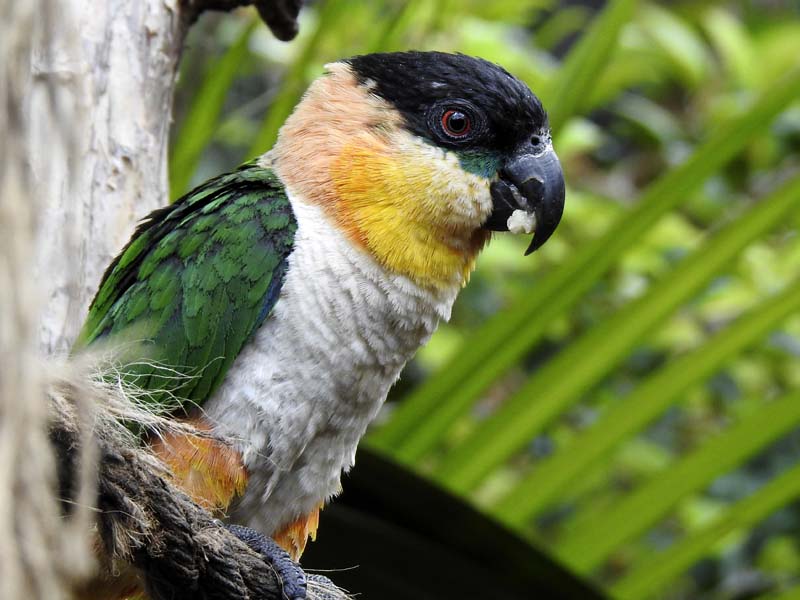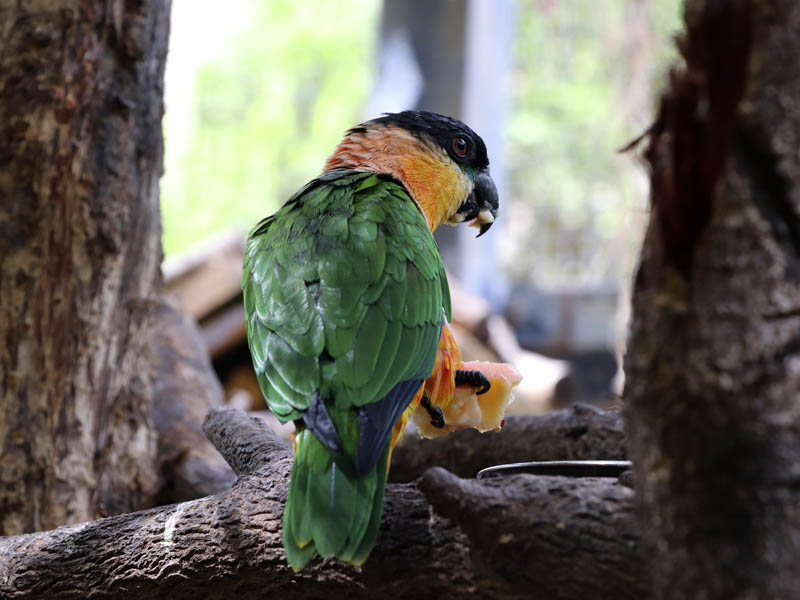The black-headed parrot (Pionites melanocephalus), also called cherlicres in South American Spanish, is a parrot or psittacine easily distinguishable from other caique by its colouring: yellow to orange head; black plumage on the crest; white breast; green back, wings and tail; and yellow thighs and lower tail. There are no differences between males and females in this species, in other words, there is no sexual dimorphism.
This agile species usually lives in pairs or flocks of up to ten individuals, although it can form larger groups of up to thirty individuals. Together, they roam the areas of the rainforest they inhabit to find their food, which consists of fruit, seeds, flower nectar and possibly also small insects or invertebrates. It is a very sociable species, interacting with social grooming behaviour, but does not form mixed groups with other birds; rather, its flocks are monospecific.
It inhabits forests in the northern basin of the Amazon, the world's longest and largest river. Although it can live in lowland rainforests and terra firme forests, it chooses varea forests, prone to flooding and especially humid, distributed in Brazil, Colombia, Ecuador, French Guiana, Guyana, Suriname and Venezuela. Although its wild population has not been quantified and its numbers appear to be declining, the extensive area it occupies, the quality of its habitat and the absence of fragmentation of its populations place it outside of vulnerability to extinction, being assessed as Least Concern by the International Union for Conservation of Nature (IUCN) Red List.


















